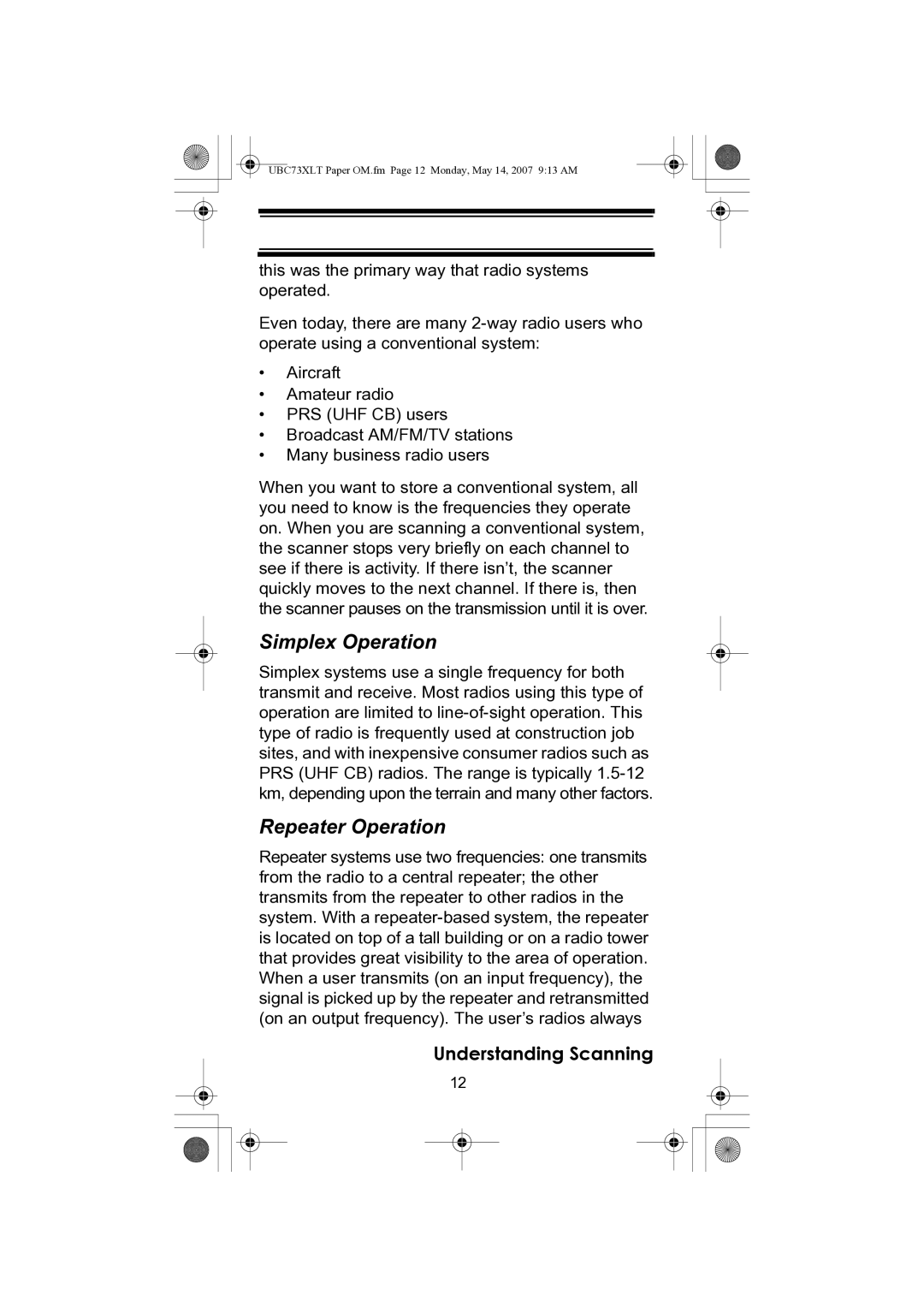
UBC73XLT Paper OM.fm Page 12 Monday, May 14, 2007 9:13 AM
this was the primary way that radio systems operated.
Even today, there are many
•Aircraft
•Amateur radio
•PRS (UHF CB) users
•Broadcast AM/FM/TV stations
•Many business radio users
When you want to store a conventional system, all you need to know is the frequencies they operate on. When you are scanning a conventional system, the scanner stops very briefly on each channel to see if there is activity. If there isn’t, the scanner quickly moves to the next channel. If there is, then the scanner pauses on the transmission until it is over.
Simplex Operation
Simplex systems use a single frequency for both transmit and receive. Most radios using this type of operation are limited to
Repeater Operation
Repeater systems use two frequencies: one transmits from the radio to a central repeater; the other transmits from the repeater to other radios in the system. With a
Understanding Scanning
12
